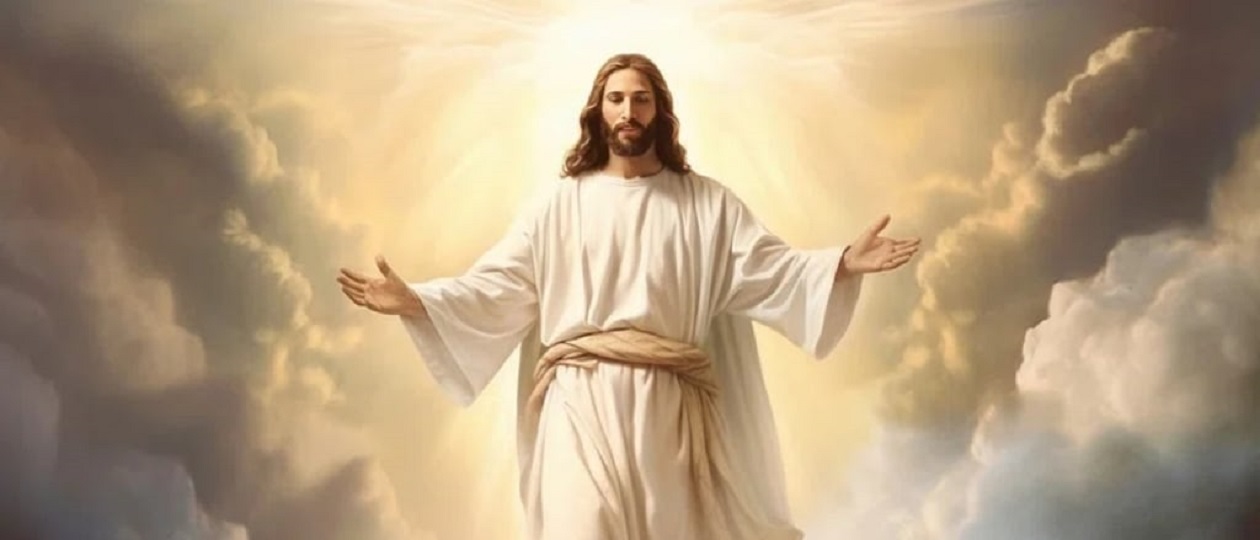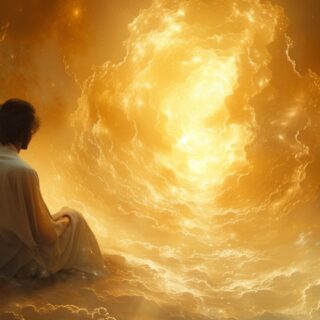
Christianity appeared during the early Roman Empire, spread throughout the Mediterranean area and beyond it, and within four centuries had become the dominant religion and system of thought in the Near East, North Africa, and Europe.
The influence of Christian attitudes toward the natural environment was widespread, particularly in the last few centuries of ancient history. Some of the central teachings of Christianity bore directly upon the relationship of mankind to nature, but probably just as important were the implications of Christian ideas concerning humanity and the environment which grad- ually became evident as thought and life developed in societies influenced by Christianity.
The most important Christian ideas about the natural environment were inherited directly from Judaism. Christians retained the Jewish Bible as the Old Testament and accepted its teachings concerning God’s creation of the universe and providential rule over it, and human dominion over and stewardship of the natural world, with ultimate responsibility to the Creator.
One of the most striking characteristics of Jesus himself was his evident love of nature, exemplified in a life largely spent out of doors in the villages, countryside, and wilderness of Palestine. Most of the parables, similes, and metaphors in the recorded sayings of Jesus use images taken from the natural world, and references to trees, birds, seeds and growing grain, vines, sheep, and the work of farmers and herdsmen are common in the New Testament. “Consider the lilies of the field,” said Jesus, “they neither toil nor spin; yet I tell you, even Solomon in all his glory was not arrayed like one of these.”
Of course Jesus used the references to nature in his parables in order to illustrate truths about human spiritual life, not simply to describe nature. In order to discover the attitude toward the natural environment which is implicit in these parables, therefore, it is necessary to use a method which distinguishes the analogy or comparison which Jesus made, relating an image from nature to a moral or spiritual point, from the ideas concerning nature herself which are evident in the parable. For example, in the parables about the mustard seed, Jesus compared faith to a tiny seed which grows until it becomes a very large plant.
The point of the parables is clearly the potential and increasing power of faith. But to make such a comparison possible and so singularly appropriate, it was necessary to observe the amazing process of reproduction and growth in plants, where a huge bush develops from a tiny seed that contained within itself the power and pattern for later growth. Many of the parables can be analyzed in this way to reveal much valuable information about the attitude of Jesus and his hearers toward the world of nature. It is possible to see in his many references to seeds cast into the earth and growing, “first the blade, and then the ear, and then the full grain in the ear,” an appreciation of the order and regularity of the cycles of nature, a principle which also underlies his remarks about the signs by which farmers and sailors can tell the onset of seasons and changes in the weather.
Jesus often retired for prayer and spiritual renewal to the mountains, the sea, or the desert, which is called a wilderness or a “deserted place” in the Greek of the New Testament. He also chose such places to speak to his followers. He taught beside the sea, went up on a mountain to deliver a sermon, and invited his apostles to come apart with him “to a desert place, and rest a little.”
Many of the most important events of his life took place in the wilderness; he was tempted and strengthened for his mission there, the transfiguration took place on a mountain top, and the painful decisions of his last week on earth were made on the Mount of Olives and in the Garden of Gethsemane. The chief characteristic of such places is their isolation; in contrast to city and village, they were quiet and free from the distracting presence of crowds of people, suitable places to go for a period of time to commune with God.
Jesus reminded his followers often of mankind’s dependence upon the natural world. He advised them to pray for daily bread, and often told parables based on the occupations of those who gain their living by working with nature and its products, such as fisherfolk, farmers, shepherds, and vinedressers. He took the common elements of nature found in the environment of Palestine as sacramental substances, investing them with deep spiritual significance. He used the giving of a cup of water as a sign of one person’s kindness to another. Water he regarded as both a literal cleansing agent-he advised a healed man to wash in it-and a sign of spiritual cleansing and rebirth in baptism.
In the last supper which he shared with his disciples before his death, he gave particular meaning to bread and wine, the staple ingredients of the Mediterranean diet and elements also blessed by prayers in the Jewish tradition. Far from making a separation between the human spirit and the natural world, Jesus believed that people should take joy in nature’s beauty, learning from the examples offered by nature and leading a simple life, accepting in gratitude the necessities of life from nature as gifts of God.
Christianity’s central teaching about the natural world has always been that it is the creation of God. The New Testament speaks of “a living God who made the heaven and the earth and the sea and all that is in them.” As Creator, God continues his concern for his creation and provides for his creatures. It is “He who supplies seed to the sower and bread for food.” But his providence is not for mankind alone, for “look at the birds of the air; they neither sow nor reap. and yet your heavenly Father feeds them.” Not a single sparrow “is forgotten before God.”
The New Testament also repeats the Old Testament affirmation that the created world reveals the hand of the Creator to observant people. Paul, in a well-known passage in Romans, maintains that all people should be able to see the creative work of God manifested in the world. “Ever since the creation of the world his invisible nature, namely his eternal power and deity, has been clearly perceived in the things that have been made.” As the creation of God, Christianity teaches, the natural environment is in itself good. “Everything created by God is good, and nothing is to be rejected if it is received with thanksgiving.”
This good world, according to the New Testament writers, was given by God as a trust to human beings. Mankind is God’s vicegerent, his representative or steward. “Now in putting everything in subjection to man, he left nothing outside his control.” All kinds of animals can be tamed or hunted, killed, and eaten by people. Human dominion is not necessarily seen as exploitive, however. It is the meek who shall inherit the earth, and people must make account of their stewardship to God.
But according to the Christian view, since created things are subject to mankind, they are subject to a weak and fallen species which is in need of reconciliation with God. Mankind has failed as God’s steward. Being created in God’s image, people have instead rebelled against God and attempted to make themselves the lords of creation. The natural world suffers in a state of subjection and decay, but when humanity is saved, the natural order is saved also.
For the creation waits with eager longing for the revealing of the sons of God; for the creation was subjected to futility, not of its own will but by the will of him who subjected it in hope; because the creation itself will be set free from its bondage to decay and obtain the glorious liberty of the children of God. We know that the whole creation has been groaning in travail together until now; and not only the creation, but we ourselves, who have the first fruits of the Spirit, groan inwardly as we wait for adoption as sons, the redemption of our bodies.
Jesus Christ appears in Christianity, therefore, not only as the Savior of mankind, but also as the Savior of the whole created world. Christ is identified with the Logos, or creative word of God, who “was in the beginning with God; all things were made through him, and without him was not anything made that was made.”
Since it was through Christ that God created the world, Christ also bears the nature of God in providence, “upholding the universe by his word of power,” for “in him all things hold together.” Christ’s power over the elements of nature was clear from his earthly life as described in the New Testament, in his ability to calm the wind and sea and heal the suffering bodies and minds of human beings. It is further through Christ that the broken harmony of the world is restored, because God wills “through him to reconcile to himself all things, whether on earth or in heaven.” Thus Christianity regards Christ as having the role of cosmic savior.
Those who became Christians in the ancient world learned that their relationship to the natural world could be defined in these terms: “All things are yours, and you are Christ’s and Christ is God’s.″ As in the Jewish view, people are in control of the world but are ultimately responsible to God for their actions in regard to it. At the same time, Christians were urged not to “love the world or the things in the world.” They should worship God the creator, and not created things, which, good and important though they are, cannot claim the ultimate concern of people. While the natural environment reveals God’s creative work and providence, it must not be allowed to stand in the place of God or as a barrier between people and God. These New Testament warnings are in actuality not directed against nature itself, which was created good and remains good, but against the rebellious state of mind of mankind, which is all too ready to turn away from God.
Christians were taught not that the natural world is without any intrinsic value but that it is in its present form temporary and insecure. “The things that are seen are transient, but the things that are unseen are eternal.” The imminent destruction of the world by a disaster which is at least in part a catastrophe of nature, in which the earth and seas and heavens “will all grow old like a garment,” and “like a mantle” God will “roll them. up,” was described in graphic terms in the New Testament.
But it should be pointed out that these events were to mark not the abolition of the natural environment but its transformation and the restoration of its original harmony. A more perfect cosmos will succeed the old; “a new heaven and a new earth,” as the result of a new creation: “Behold,” says the Lord, “I make all things new.”





